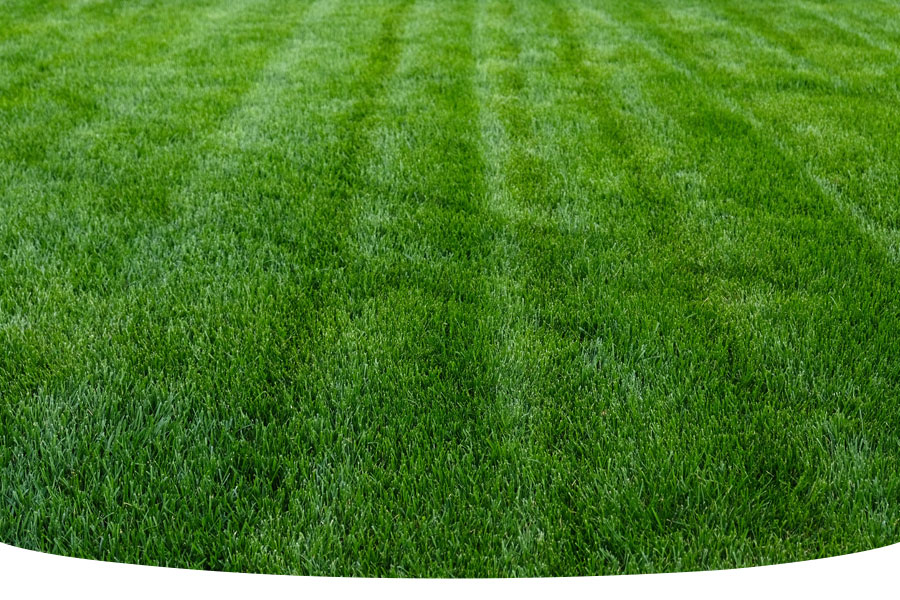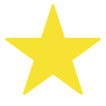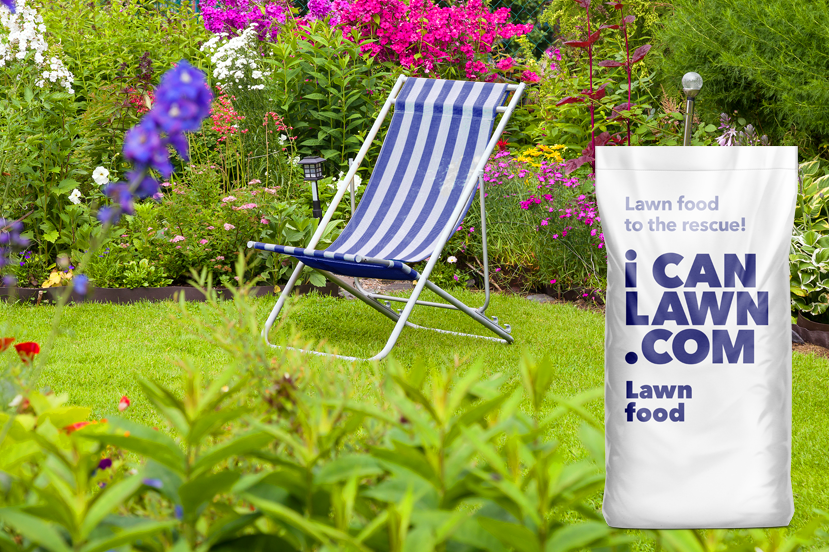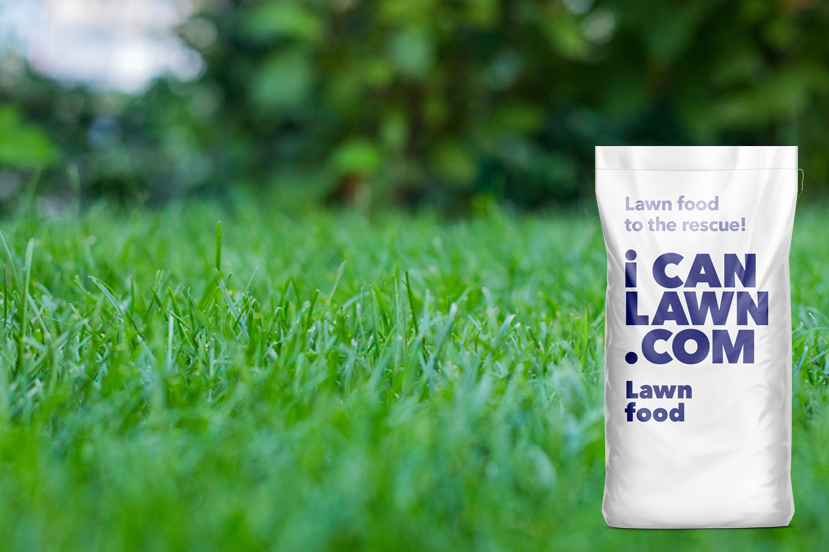How to care for a fine lawn
For some folk, the lawn is the epicentre of all family activity – and for others, the sole centre of all your attention! If you enjoy the pleasure of a supremely green, weed and moss free striped lawn then look no further. Whether you have one already and want to maintain it, or decided to upgrade your lawn level, we'll tell you all you need to know to create your very own pièce de résistance!

Knowing how to care for a fine lawn is important since they typically require a bit more care and attention than a lawn that uses regular grass seed. If you’re a lawn care enthusiast and emerald green stripes frequently appear in your dreams, then you’ll know that a fine lawn needs a lot of care to keep it in first-class condition.
There’s a lot involved in keeping a luxury lawn, so we’ve put together all things fine lawn care-related that you’ll need to consider below.
Seasonally overseed
Most lawns will go a year, if not longer, without being overseeded, but if you have a fine lawn, you will need to do this more regularly. Not only because reseeding helps to build a more dense lawn with a superior root system, but the overseeding process encourages you to undertake more lawn maintenance tasks that can lead to a much healthier lawn – such as scarifying, feeding and weed and moss removal. If you’re looking for a super fine mix to overseed with, you should try our Super Fine Luxury Lawn.
Seasonally feed
For most homeowners, we typically recommend a minimum of two feeds a year – once in summer and once in winter. Yet, if you have a fine ornamental lawn, you must increase this with in-between season feeds to keep your lawn looking pristine green all year round. Your lawn care regime should feature a blend of longer-duration feeds (up to 16 weeks) and shorter-duration feeds (6 weeks) to ensure your lawn is being fed at all times.
Spring and summer fine lawn feeding
You may start the season (April – March onwards) with a 16-week summer feed such as our All Summer Long that will take you to July. To feed your lawn for the remainder of the summer, you should consider a 6-week greening feed such as our Oh So Green. Alternatively, if you are planning any overseeding or weed and moss removal during this time, consider our Pre-Seed First Feed / 3 IN 1 Lawn Rescue feeds that also work over six weeks.
Autumn and winter fine lawn feeding
Approaching Autumn, it is best to use a consistent feed, such as our Winter Remedy, that will protect your lawn throughout the colder months for 16 weeks. Make sure to let your lawn feeds work for the recommended amount of time so you don’t overfeed your lawn with too many products.

Scarify your lawn
Regular scarifying is a great way to remove dead grass and moss buildup (thatch) from your lawn to help your growing grass thrive. Scarifying can be done using a rake or an electric scarifier. Following this process, your lawn will look infinitely worse, but within weeks your grass will start to become greener, thicker and healthier. When overseeding your lawn, scarifying also helps to loosen up the top layer of soil so your new seed will embed well.
Aerate to help your fine lawn breathe
With regular feeding, you want to ensure that your grass is easily taking up all the nutrients you’ve been giving it. Aeration helps your lawn to breathe. By creating small holes or spikes in your lawn, you help break up the soil, creating space for nutrients and water to move around more freely. Aeration also helps to alleviate compaction, which can help prevent disease and fungi from forming. You can aerate your lawn by using a garden fork for a small area or a hollow tine aerator for a larger area. Our full guide on lawn aeration will help you get this perfectly sorted.
Top dress
Top dressing is the process of adding extra material to the surface of your lawn to help improve your soil's condition and the overall look of your lawn. This could be topsoil, compost or sometimes just sand. What you decide to top dress your lawn with is up to you, but it’s best to do your research before applying anything extra.
Top dressing materials will do different things for your lawn - topsoil can be useful to level areas out and improve soil structure, compost works well as a natural feed, and sand can help improve drainage. Top dressing is best followed by aeration so that you can brush the extra material into the holes created. To keep your lawn in good nick, you should aim to topdress in spring and autumn.
Mow low when cutting your grass
Due to the fine grass species that are present in most ornamental lawn mixes, your lawn will tolerate closer mowing, which helps to create that premium sports pitch look.
For an ornamental lawn, you can mow at 10-20mm, but hold back on mowing in heatwave/drought conditions and when temperatures drop below 10 degrees. You should also mow on the highest setting of your mower for your first and last mow of the season. For in-between-season mows, always use the 1/3 mowing rule (don’t mow more than 1/3 of your current lawn height). Read our full guide on mowing your lawn for more tips on this.
Stripe for success
Of course, you can mow at whatever height you wish, but if you want your statement stripes to look their best – this does look better with shorter grass. If you’re mowing at the correct height, the next thing to do is achieve those dreamy stripes.
There isn’t a huge science to striping your lawn, but the process is an important part of how to care for a fine lawn. It appears ‘striped’ because it has been pushed in different directions, and the sun's reflection causes these directions to appear as two different colours!
There are various ways to achieve this look, but the best way is to invest in a lawnmower with a rear roller. This pushes the grass back and forth to create the striped look. Unfortunately, having a rear roller on your lawnmower doesn’t make you an expert ‘striper’ right away, but with some practice on your pivots, you should be able to stripe just like the professionals! You can find our tips on how to stripe your lawn here.
Be observant
There’s nothing worse than a weed grass, red thread or pests taking hold of your well-cared-for lawn – so look out for changes that all is not what it seems. For example, if you are feeding your lawn all year round, it is unlikely that yellowing will be an issue. But if this begins to appear in random patches, you may have a pest present. Likewise, if thicker, stockier grass starts to grow in patches – this isn’t a sign of a good overseed – rather, some weed grasses are making their way into your lawn!









